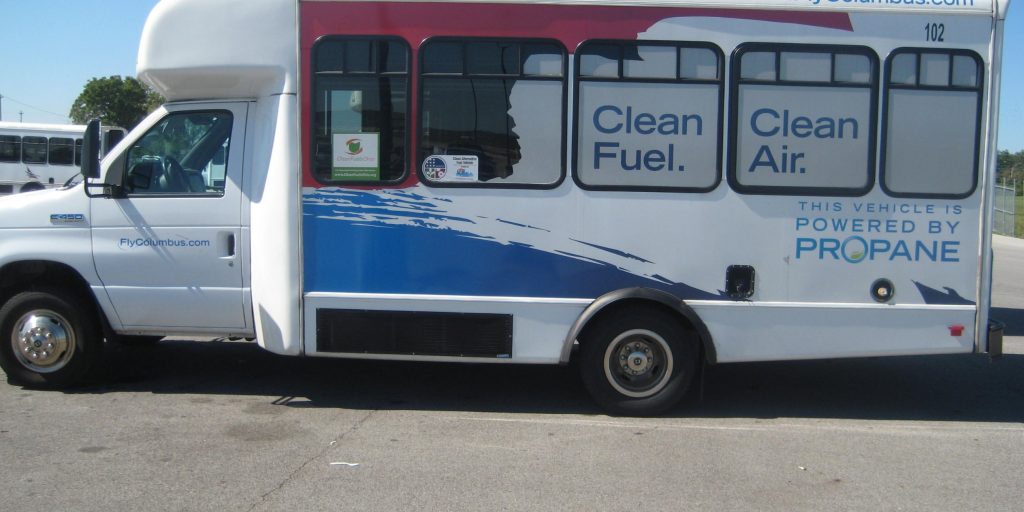Alternative fuel shuttle
Port Columbus International Airport, a Class C airport six miles east of downtown Columbus, Ohio, is the second largest airport in the state and provides 151 non-stop flights to 34 airports via 15 airlines daily. The airport operates 25 passenger shuttles that provide transportation between its long-term parking lots and entrances for arrivals and departures. The shuttles, operating 24/7, travel 50,000 miles and carry more than two million passengers annually. In 2008, Port Columbus began researching alternative fuels following the announcement of new, more stringent emissions standards and diesel fuel regulations that would take effect in 2010. Thomas Swackhamer, manager of parking, ground transportation, and revenue at Port Columbus, began exploring electric, ultra-low sulfur diesel (ULSD), natural gas, and propane-autogas-fueled models to replace the airport’s fleet of older diesel-fueled passenger parking shuttles. In 2009, the airport tested its first propane autogas shuttle, a Ford F-450 cutaway converted by Starcraft. Propane autogas reduces greenhouse gas emissions by up to 25 percent compared with gasoline and reduces smog-producing hydrocarbon emissions by 40 percent. Port Columbus liked the performance, and placed an order for four more the following year using a Department of Energy grant. Currently, the airport operates 19 Ford F-450 cutaways, which have been converted with ICOM equipment by their supplier from new gasoline engines. By February 2014, all 25 shuttles will operate on propane autogas.
Port Columbus International Airport, a Class C airport six miles east of downtown Columbus, Ohio, is the second largest airport in the state and provides 151 non-stop flights to 34 airports via 15 airlines daily. The airport operates 25 passenger shuttles that provide transportation between its long-term parking lots and entrances for arrivals and departures. The shuttles, operating 24/7, travel 50,000 miles and carry more than two million passengers annually. In 2008, Port Columbus began researching alternative fuels following the announcement of new, more stringent emissions standards and diesel fuel regulations that would take effect in 2010. Thomas Swackhamer, manager of parking, ground transportation, and revenue at Port Columbus, began exploring electric, ultra-low sulfur diesel (ULSD), natural gas, and propane-autogas-fueled models to replace the airport’s fleet of older diesel-fueled passenger parking shuttles. In 2009, the airport tested its first propane autogas shuttle, a Ford F-450 cutaway converted by Starcraft. Propane autogas reduces greenhouse gas emissions by up to 25 percent compared with gasoline and reduces smog-producing hydrocarbon emissions by 40 percent. Port Columbus liked the performance, and placed an order for four more the following year using a Department of Energy grant. Currently, the airport operates 19 Ford F-450 cutaways, which have been converted with ICOM equipment by their supplier from new gasoline engines. By February 2014, all 25 shuttles will operate on propane autogas.
















